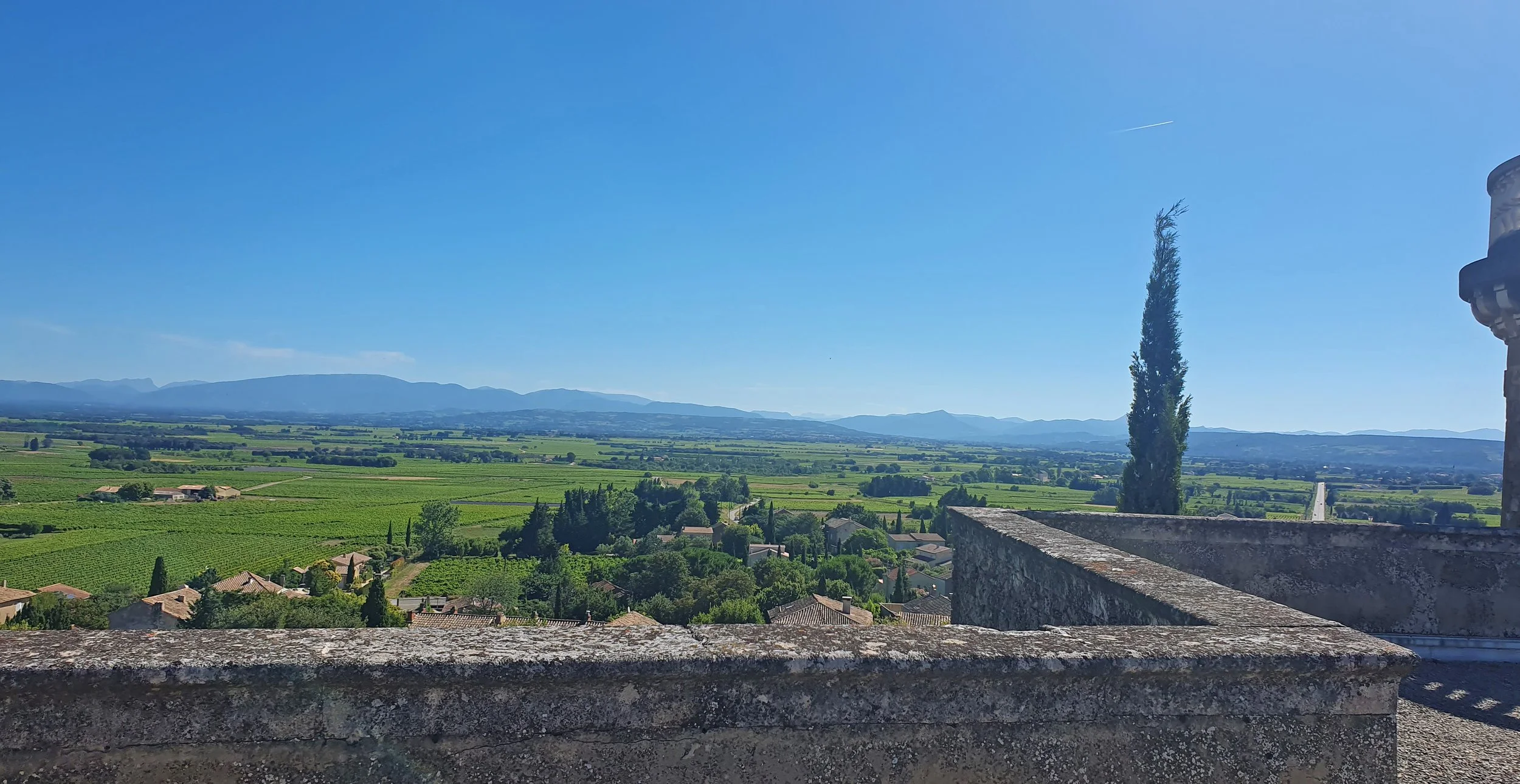Restored Renaissance Château in Provence, with Vineyard Views and 25 Private Acres
Perched above the Rhône Valley, in a pocket of Provence where the light lands softly on vine-covered hills, this 12th-century château has been many things: a papal court, a noble residence, a fortress, a retreat. Today, it remains all of those in spirit—elevated, strategic, and quietly opulent.
The site sits along the ancient Via Agrippa, the Roman road that once connected Orange to Vaison-la-Romaine. Its elevated position—sharp rock, Rocca Acuta—gave it both a name and a purpose. First built as a stopover, then a fortress by the 12th century, the château played a key role in the region’s power dynamics, especially during the Avignon Papacy, when it was used as a papal court at the frontier of Comtat Venaissin. The original Justice Hall still exists, as does the 11th-century tower that survived the Wars of Religion.
By the 16th century, the structure was reimagined as a more refined residence by the Marquises of Rochegude. Restoration work during the reign of Louis XIV introduced Renaissance flourishes, while later contributions from Petit Trianon artisans and even Viollet-le-Duc added fine plasterwork and terracotta detail. The result is a rare blend of Provençal restraint and royal-era craftsmanship.
Its more recent chapter tells a different story. In the 1970s, the château was converted into a luxury hotel and welcomed international guests for decades as part of the Relais & Châteaux collection. That hospitality DNA remains, from its 25 ensuite bedrooms and vaulted reception spaces to the gardens, terraces, and restaurant-ready infrastructure.
Set across 25 private acres of enclosed, deer-dotted parkland, the estate also includes a pool, tennis court, and several outbuildings. One parcel is approved for development, with potential for up to 16,000 sq ft of new living space—a rare opportunity in this region to expand or reimagine an already storied property.
Access is seamless: 10 minutes from the A7 motorway, 40 minutes from Avignon TGV, and under two hours from Marseille or Lyon airports. But the atmosphere is timeless—layered with history, shaped by empires, and surrounded by vineyards.
Provence has no shortage of charm, but few estates hold this kind of narrative weight—and even fewer offer space to write the next chapter.
All photos belong to the listing agency.
















